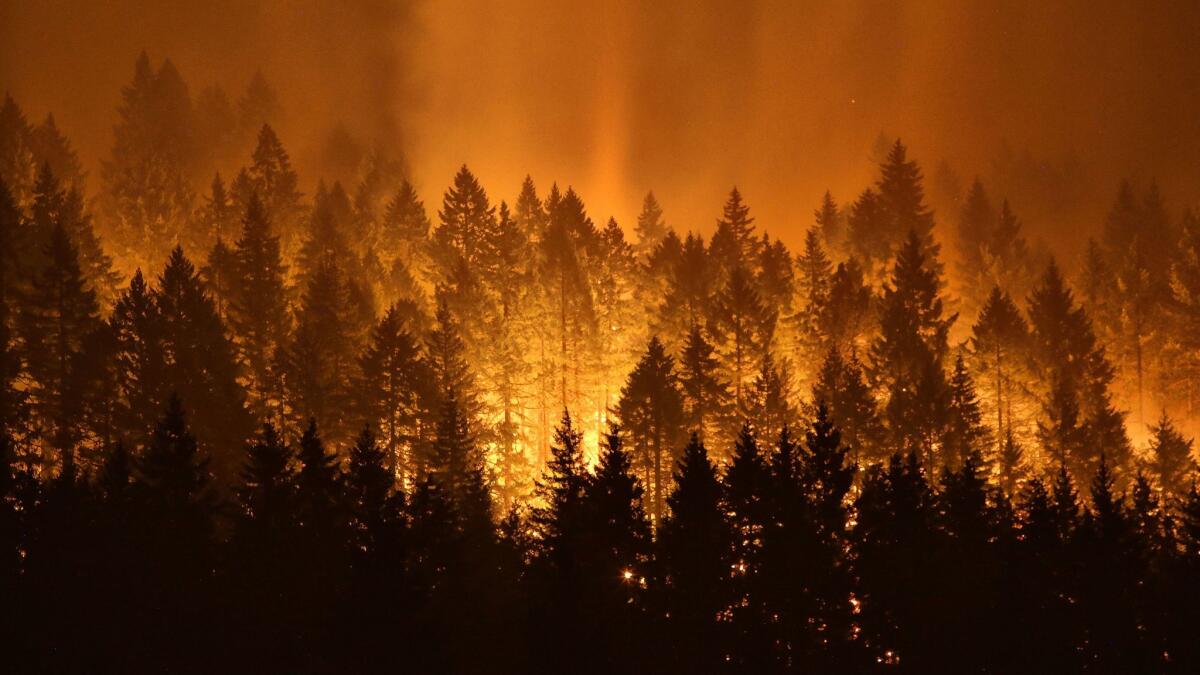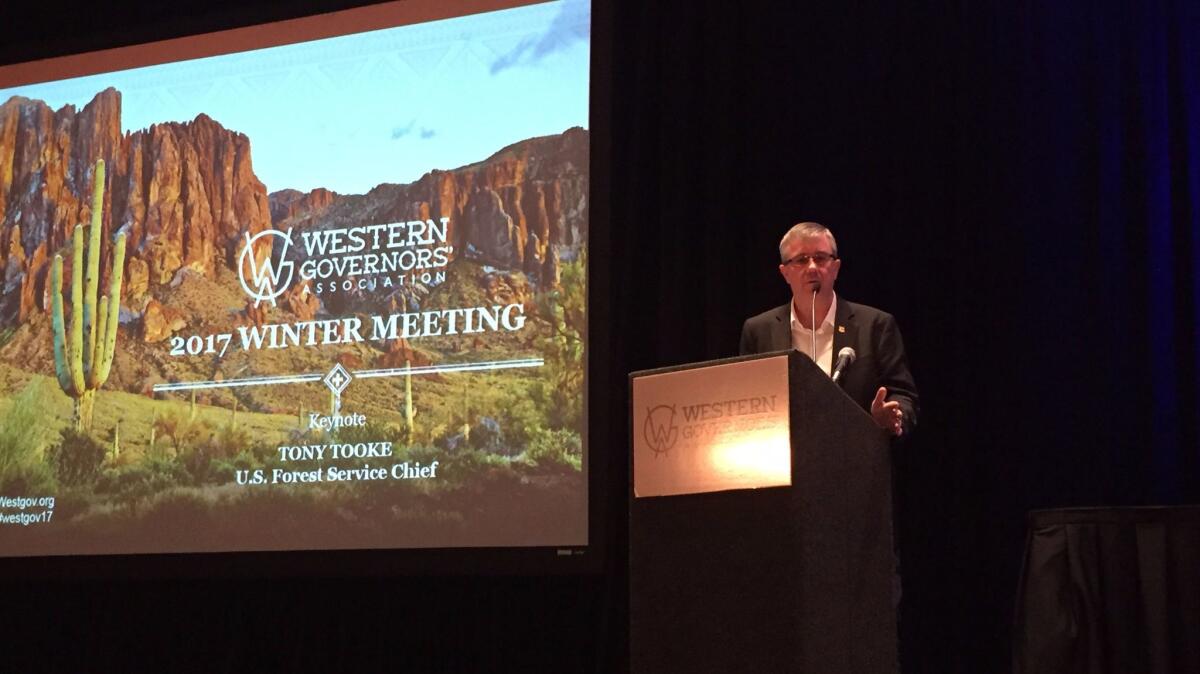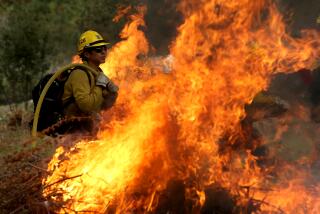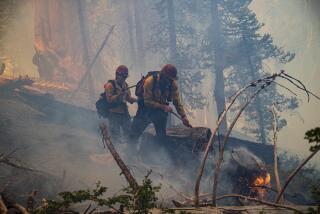As Western governors gather, wildfires and disasters are a big part of the agenda

The Bearskin fire burned nearly 30,000 acres in Idaho. The Chetco Bar fire torched 191,000 acres near the Oregon coast. The Lodgepole Complex fire, the largest of 2017, ignited 270,000 acres in Montana.
And in Northern California this fall, fast-moving fires killed at least 44 people.
As wildfires — deadly, destructive, depressing — continue to wreak havoc across the West, governors and local elected officials are trying to work together to combat them.
On Friday, that collaboration was on display at the Western Governors’ Assn. conference in Phoenix as leaders of states ravaged by wildfires — red states and blue states alike — discussed ways to prevent future destruction by working with one another and the federal government.
“This is an ongoing tragedy that affects us all. … It shows no partisan slant,” said Montana Gov. Steve Bullock, a Democrat in his second term. “Our fire seasons are getting hotter and longer.”
During the summer and into the fall, billows of thick black smoke hovered over vast portions of the West, and flames consumed millions of acres that spanned swaths of California, Colorado, Idaho, Montana, Oregon, Utah and Washington.
To date this year, the U.S. Forest Service has spent more than $2 billion battling forest fires around the country — a record — in one of the nation’s worst fire seasons. The previous record was $1.7 billion spent in 2015.
Through November, 56,100 wildfires this year have burned nearly 9.1 million acres in the United States, with much of the destruction in the West, according to statistics by the National Interagency Fire Center. The annual number of fires and acreage burned have steadily increased since 2013.

U.S. Forest Service Chief Tony Tooke said nearly 80% of the country’s forest system resides in the West.
Tooke, who became head of the agency in September, addressed the conference Friday and said that in the years ahead his No. 1 goal is to increase efforts that prevent wildfires and reduce community risks — such as mudslides and contaminated water — from burn areas.
“Our science shows that about 85% or 90% of the time when we thin forests we reduce the chances of a catastrophic fire,” he said. “Fires may still burn, but the damage won’t be as bad.”
The discussions Friday in Phoenix were often technical, exploring issues such as mutual aid. The 10 states represented also shared best practices on dealing with fires.
Several governors at the gathering, such as Colorado’s John Hickenlooper, have had years of experience with destructive wildfires.
In 2012, the Waldo Canyon fire in Colorado Springs burned 346 homes and killed two people. The following year, the Black Forest fire, also in Colorado Springs, burned 511 homes and also killed two people.
In 2013, with Hickenlooper’s support, the state Legislature created the Wildfire Risk Reduction Grant Program. So far, the program has doled out $12 million to fund 132 projects in 35 counties throughout Colorado. The funds are used by local governments or community groups to reduce the risks of wildfire through mitigation efforts. Other states in the West have created similar grant programs.
So far, this fire season has been especially costly in California and Montana.
The deadly fires in Northern California this fall caused an estimated $6 billion in damage. In Montana, fire suppression costs neared $400 million. The state received eight federal grants that will pay 75% of those costs. Still, Montana will spend $60 million on firefighting — a record amount for the state.
Bullock said climate change is contributing to longer fire seasons.
“We have to be addressing climate change,” he said. “It’s a major issue.”
Idaho Gov. C.L. “Butch” Otter, a Republican, blamed more on chance than climate change, noting the need to work alongside fellow governors and the federal government in combating natural disasters.
“Lightning strikes, which cause a lot of these fires, don’t recognize borders or political affiliation,” said Otter, who has been in office since 2007. “When we have a fire in Idaho, if the wind’s blowing a certain way it affects any state around us. … We have to be together in this fight.”
Twitter: @kurtisalee
ALSO
Wildfires continue to wreak havoc across the West
California wildfires have killed 40 people; dozens still missing as firefighters make progress
UPDATES:
8:05 p.m.: This article was updated throughout with comments from conference participants about fighting wildfires.
This article was originally published at 11:15 a.m.
More to Read
Start your day right
Sign up for Essential California for news, features and recommendations from the L.A. Times and beyond in your inbox six days a week.
You may occasionally receive promotional content from the Los Angeles Times.







